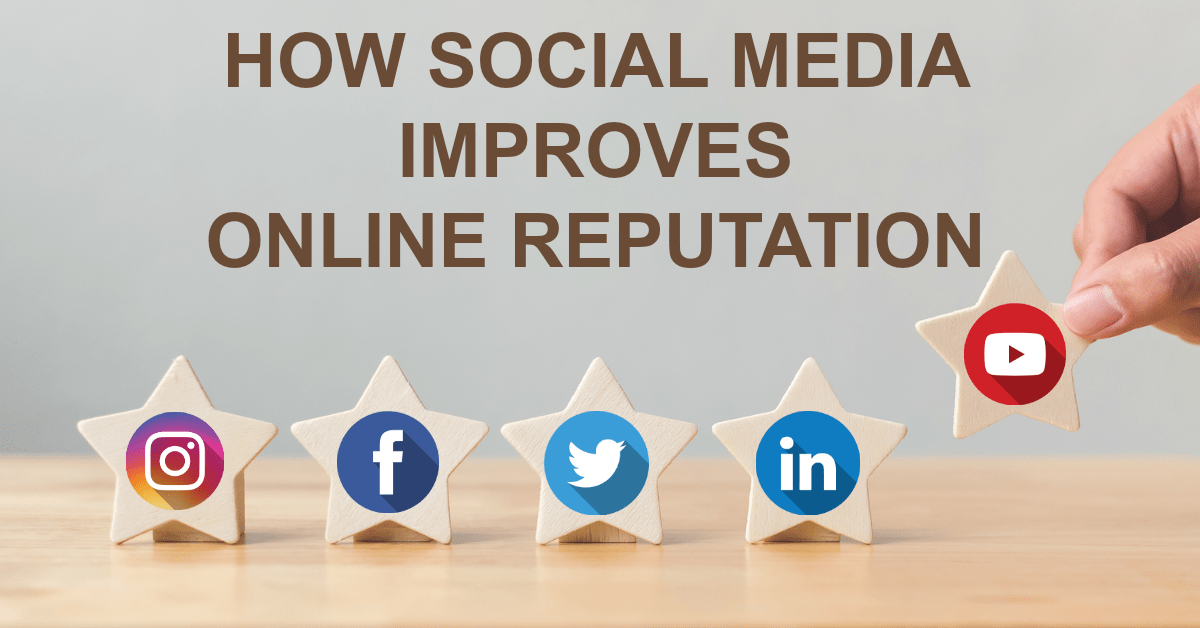In today’s digital age, where information travels at the speed of light, managing your social media reputation has become an indispensable aspect of personal and business success. From individuals to brands, the way you’re perceived on social media can significantly impact your relationships, opportunities, and overall standing. In this comprehensive guide, we will delve into the world of social media reputation management, exploring strategies, tools, and techniques to effectively shape and safeguard your online image.
Understanding Social Media Reputation Management

Your social media reputation encompasses the perceptions, opinions, and feelings that others have about you or your brand based on the content you share, the interactions you engage in, and the overall image you project on social media platforms. It’s a dynamic and ever-evolving concept influenced by your online behavior and the way you communicate.
The Impact of a Positive Online Image
A positive social media reputation can open doors to new opportunities, whether it’s career advancement, business partnerships, or personal connections. Conversely, a negative reputation can lead to missed opportunities, damaged relationships, and even public backlash. In a digital landscape where information can go viral in seconds, managing your online image is essential.
Building a Strong Foundation
1. Crafting an Authentic Persona
Authenticity is the cornerstone of a strong social media reputation. Your online persona should reflect your genuine self or your brand’s core values. Share your real interests, passions, and experiences to create a connection with your audience.
2. Defining Your Brand’s Voice
For businesses, consistency in branding is vital. Define your brand’s voice – the tone, language, and messaging style that align with your brand identity. This consistency helps build trust and familiarity with your audience.
3. Selecting the Right Platforms
Not all social media platforms are created equal. Choose the platforms that best align with your goals and target audience. Whether it’s Instagram for visual content, Twitter for concise updates, or LinkedIn for professional networking, each platform serves a specific purpose.
Content is King: Creating Compelling Posts
1. Tailoring Content to Your Audience
Understanding your audience’s preferences and needs is essential. Craft content that resonates with them, whether it’s entertaining, informative, or emotionally engaging. Tailored content increases engagement and encourages sharing.
2. Utilizing Visual Elements
Visual content, such as images and videos, significantly enhances user engagement. Human beings are naturally drawn to visuals, and incorporating them into your posts can make your content more compelling and shareable.
3. Consistency and Frequency
Maintain a consistent posting schedule to keep your audience engaged. Regular updates show that you’re actively involved and committed to providing value. However, prioritize quality over quantity to ensure your content is always relevant and valuable.
Engagement and Interaction
1. Responding to Comments and Messages
Engage with your audience by responding to comments and messages promptly. This interaction demonstrates that you value their input and are committed to building meaningful connections.
2. Handling Negative Feedback
Not all feedback will be positive. When faced with negative comments or reviews, respond calmly and professionally. Address concerns, offer solutions, and show a willingness to improve.
3. Encouraging User-Generated Content
Encourage your followers to create content related to your brand. User-generated content not only increases engagement but also serves as authentic testimonials that can enhance your reputation.
Monitoring and Analytics
1. Utilizing Online Reputation Management Tools
Various tools are available to monitor and manage your online reputation. These tools help track mentions of your brand, analyze sentiment, and provide insights into how you’re perceived.
2. Tracking Mentions and Sentiments
Monitor mentions of your brand across different platforms. Positive mentions provide opportunities for engagement, while negative ones allow you to address issues before they escalate.
3. Measuring Engagement Metrics
Engagement metrics, such as likes, shares, comments, and retweets, offer insights into the effectiveness of your content. Analyze these metrics to refine your social media strategy.
Crisis Management: Navigating Challenges
1. Preparing for Potential PR Crises
Anticipate potential issues that could harm your reputation. Develop a crisis management plan outlining how you’ll respond to different scenarios, ensuring a swift and coordinated approach.
2. Swift and Transparent Responses
In the face of a crisis, respond promptly with transparency. Address the issue, share the steps you’re taking to resolve it and communicate your commitment to rectifying the situation.
3. Turning Negatives into Positives
Crises can be turned into opportunities to showcase your brand’s values and commitment to improvement. Use challenges as a chance to strengthen relationships with your audience.
Collaborations and Influencer Partnerships
1. Leveraging Influencer Credibility
Partnering with influencers can expand your reach and enhance your credibility. Collaborate with influencers who align with your values and can authentically promote your brand.
2. Authenticity in Collaborations
Genuine collaborations resonate with audiences. Ensure that influencer partnerships feel authentic and provide value to both parties involved.
3. Maximizing Reach and Impact
Influencers have dedicated followers who trust their recommendations. Leverage this trust to amplify your message and increase engagement.
Privacy and Security Concerns of Social Media Reputation Management
1. Safeguarding Personal Information
Protect your personal and sensitive information. Regularly review your privacy settings and be cautious about sharing confidential details on public platforms.
2. Preventing Unauthorized Account Access
Secure your social media accounts with strong passwords and two-factor authentication. Unauthorized access can lead to reputational damage and potential data breaches.
3. Dealing with Online Trolls and Cyberbullying
Online trolls and cyberbullying are unfortunate realities. Responding to negativity with empathy and grace can help defuse situations and maintain a positive reputation.
Staying Up-to-date with Trends in Social Media Reputation Management
1. Embracing New Platforms and Features
The social media landscape is constantly evolving. Stay updated on emerging platforms and features to remain relevant and engage with a wider audience.
2. Adapting to Algorithm Changes
Social media algorithms influence content visibility. Stay informed about algorithm updates and adjust your strategy to ensure your content reaches your target audience.
3. Keeping Your Content Fresh and Relevant
Regularly update your content to reflect current trends and developments. Fresh and relevant content demonstrates your commitment to staying informed and engaged.
Long-Term Social Media Reputation Management Building
1. Consistency over Time
Building a strong social media reputation takes time and dedication. Consistently apply the principles of authenticity, engagement, and quality content creation.
2. Showcasing Professional Achievements
Highlight your accomplishments and milestones. Sharing your professional journey and achievements reinforces your expertise and credibility.
3. Engaging with Thought Leadership
Position yourself as a thought leader by sharing insightful and valuable content. Engage in meaningful discussions that contribute positively to your industry or field.
Conclusion
In the digital realm, your social media reputation can be a powerful asset or a potential liability. By proactively managing your online image, you can influence how others perceive you and your brand. Remember, social media reputation management is an ongoing process that requires a combination of authenticity, strategic planning, and continuous engagement.
Ready to take control of your online reputation? Request a demo from AIM Technologies today! Discover how our innovative tools and solutions can empower you to build, monitor, and enhance your social media reputation like never before.
FAQs
What is social media reputation management?
- Social media reputation management involves actively shaping and safeguarding your online image across various platforms to influence how others perceive you or your brand.
Why is authenticity important in social media management?
- Authenticity builds trust and fosters genuine connections with your audience, leading to a more positive reputation.
How can I handle negative comments on social media?
- Address negative feedback calmly and professionally, offering solutions and showing a commitment to improvement.
What role do influencers play in reputation management?
- Influencers can expand your reach and credibility by promoting your brand authentically to their dedicated followers.
How can I stay updated on social media trends?
- Embrace new platforms, features, and trends, and adapt your strategy to keep your content fresh and relevant.


